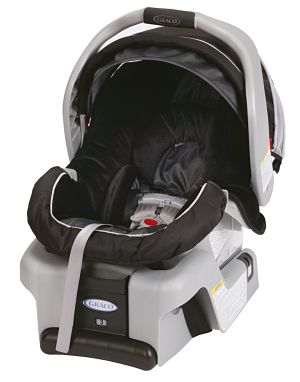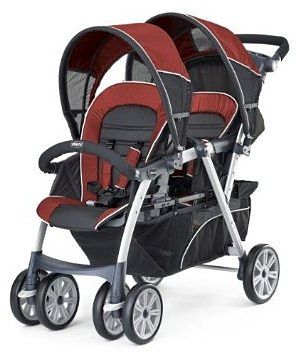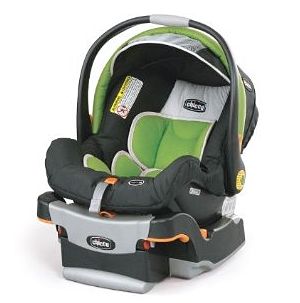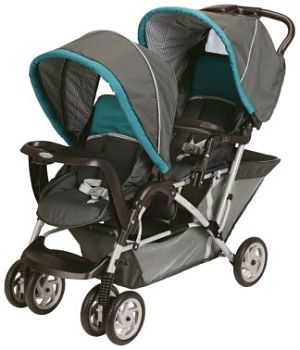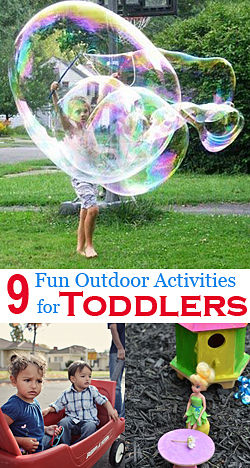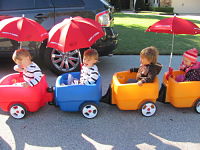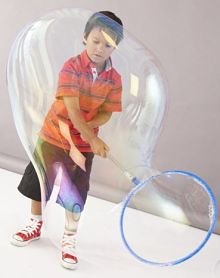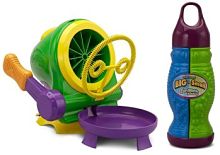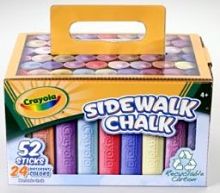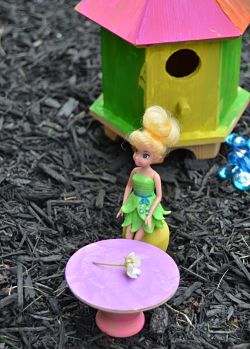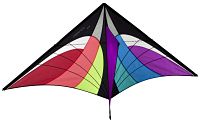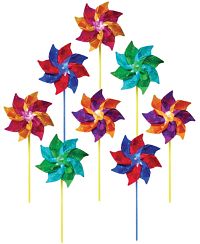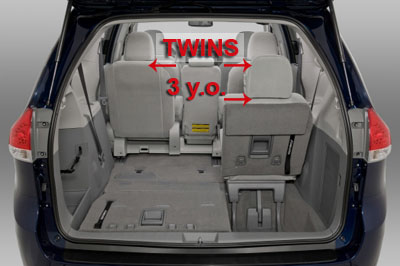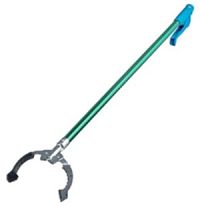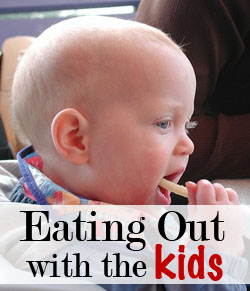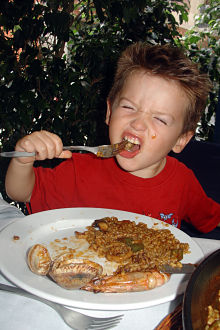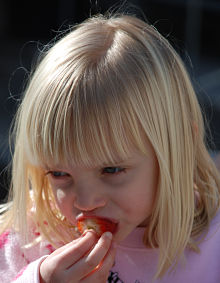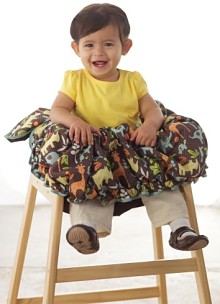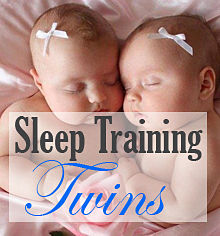
Image credit: Pinterest
Sleep training is one of the most challenging aspects of parenting newborns, and it’s even harder with multiples. For one thing, there’s twice as many babies to change, feed, burp, and tuck into bed at every nap time. Also, you encounter the classic problem of one fussy baby waking up the other. Over and over again.
After so much success in establishing our daughter’s sleep habits — she was sleeping through the night at 3 months — we were cautiously optimistic about doing the same with our twins. We weren’t that lucky, of course. There were setbacks. There were surprises and bumps in the road. Ultimately, however, we had both boys sleeping through the night (7:30 p.m. to 7:45 a.m.) by the time they were 6 months. Here’s how we did it.
Setting the Stage: The Twins’ Nursery
Our twins share a room, which is pretty common. There was not much of a debate on whether twins should share a crib; we knew there were safety concerns so we have a crib for each of them. These are positioned at a 90 degree angle to each other, so the boys can see one another if they want but they don’t have to. Both are 4-in-1 convertible cribs so we can use them as toddler beds when it comes to that.
Darkening the Nursery
We put room-darkening shades and heavy curtains on both windows. Blocking out the sunlight and achieving total darkness is critical for sleep training, because it helps prevent early wake-ups due to sunrise. This has burned us a few times in the past when we’re not on daylight savings, because there’s an east-facing window. Just a sliver of sunlight getting past the shade and curtain and right onto a twin’s face has caused super-early awakenings.
Darkening the nursery also helpful for getting the twins to sleep at an early bedtime, which we’ll go into later.
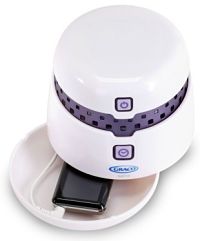
Graco Sound Machine
Providing White Noise
White noise is another important element in the nursery, for two reasons. First, it provides a steady background “hum” that covers up other noises — dogs barking, neighbors slamming their car doors, garbage trucks, thunderstorms — that might cause the twins to wake up.
Second, we generally only turn on the sound machine when it’s bedtime, so it’s one of the sensory signals to the twins that it’s bedtime. They hear the steady hum, they know it’s time to sleep. A Graco Sound Machine is perfect for this… it even works with an iPod.
Twin Bedtime Routine
Establishing a bedtime routine for your twins is crucial. Following the same steps, in the same order, at around the same time each night, tends to be habit forming for both you and the twins. For you, it helps you remember to do everything to get ready. For them, it’s a series of cues that prepares them mentally for going to bed. They know what’s coming, and they will come to understand that resistance is futile.
Here are some tips we’ve picked up in establishing our bedtime routine:
- Do both twins at the same time. This will make putting them to bed easier, and prevents disputes over bottles, blankies, pacifiers, and such.
- Start the routine at dinner. If your twins are eating solid food, make sure they get a nourishing meal at dinner. After dinner, we allow for about an hour of play time until we give them the bedtime bottles (now sippy cups) of warm milk.
- A warm bath can help. We don’t give our twins a bath every day, but when we do, it almost always helps them sleep better. Indeed, the bath-bottle-bed routine is a proven method that’s been in use for generations.
- Clean diaper, soft pajamas. Dressing each twin comfortably and in a dry diaper will make them both more comfortable, and signal them that it’s time for bed.
- Pacifier and crib. Two things are proven to reduce the risk of SIDS: letting baby sleep in the crib each time, and offering baby a pacifier. When both of these are part of the routine, they make a healthy, effective sleep habit.
It’s bound to be a little chaotic around bedtime, especially if you’re putting them to bed on your own. If there’s a spouse or family member who can help, take advantage of that! Four hands are better than two.
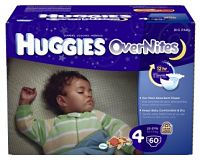 Overnight Diapers
Overnight Diapers
One thing that I highly recommend for when you start teaching your baby to sleep longer at night is an overnight diaper. These have extra padding and are super-absorbent, designed to last 8-12 hours while keeping your baby comfortable. It’s frickin’ amazing how much these diapers will hold. I’m convinced that they help our twins sleep longer, especially by preventing wet-diaper wake-ups.
Side note, we also use overnight diapers on road trips to keep the twins extra comfortable. We’ve had luck with both Huggies Overnites and the Pampers Extra Protection. There’s also an environmentally friendly overnight diaper from Seventh Generation.
Swaddlers and Blankets
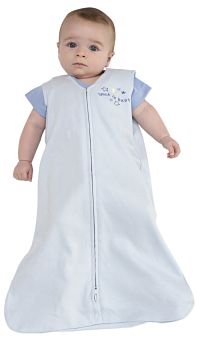 At the newborn stage, we always swaddled the twins for sleep. It’s the only safe way to give them a blanket, it keeps them warm, and it mimics the snug comfort of the womb. They make velcro-assisted swaddle blankets that are super-easy to use, but I learned to swaddle with just a plain receiving blanket too. When they started kicking out of that, we went with a baby sleep sack (left) instead. It’s a sort of wearable blanket that zips from the bottom for easy diaper changes.
At the newborn stage, we always swaddled the twins for sleep. It’s the only safe way to give them a blanket, it keeps them warm, and it mimics the snug comfort of the womb. They make velcro-assisted swaddle blankets that are super-easy to use, but I learned to swaddle with just a plain receiving blanket too. When they started kicking out of that, we went with a baby sleep sack (left) instead. It’s a sort of wearable blanket that zips from the bottom for easy diaper changes.
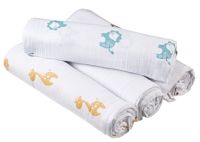
Aden+Anais Blankets
Now that our twins are over 12 months and we’re not as worried about SIDS, we let them keep a loose blanket in the crib. They cherish one blanket above all: the light, airy, Aden+Anais muslin blankets. We own about eight of these because our twins usually won’t go to sleep without them.
If you own some, you know why these are the #1 bestselling baby blanket on Amazon.com. They’re just that good.
Sleep Training Tips
Now that you have your nursery stage set, and your bedtime routine figured out, we can dig into the actual baby sleep training. You should have realistic expectations about how much your babies will sleep. If they’re under 3 months of age, they might only do 2-4 hours at a stretch and that’s normal. It’s hard for you because there are two babies, so you might only get 1-2 hours of rest at a time yourself between feedings.
You’ll know your babies are ready when they start sleeping for longer stretches – 5-7 hours at a time or longer. It might not happen at the same time for both of them — in fact it almost certainly won’t. Most other parents of multiples I’ve spoken to about this have one good sleeper and one not-so-good sleeper, just as we do. Put your good sleeper in the crib farthest from the door, so that you can extract the fussy one / early riser without disturbing his or her sibling.

Image Credit: Pinterest
Set An Early Bedtime
One of the most surprising yet effective techniques to help babies sleep longer at night is to set an early bedtime – maybe 45 minutes to an hour after dinner at the latest. For you, this might be 6:45 or 7:00. It’s earlier than you’d think. Intuitively, it seems like putting a baby to bed earlier would have them waking up earlier. But an earlier bedtime does two things:
- It helps align your twins’ sleep schedule with circadian rhythms, which are driven by daylight and nighttime
- It allows your twins to go to bed before they’re over-tired, fussy, and would fight being put to bed.
Another benefit, and I suppose you could take this either way: it gives you and your spouse a bit more time to relax in the evening before you go to bed. After some long days, that’s very valuable.
When One Twin Cries
We used to freak out a little bit when one twin was crying while the other was still asleep (or trying to be, anyway). The good news is that because they share a room, our twins don’t seem very bothered by each other’s cries. This isn’t always true — sometimes one of them will be bouncing and noisy and keep the other awake almost on purpose — but in most cases, when one boy fusses, the other one keeps on snoozing.
Most mornings, the older twin (and lighter sleeper) wakes up first. This is fine, because usually I can slip in and retrieve him before his brother wakes up. We always put them to bed at the same time, I just think that one of them needs more sleep each night than the other. This way, they both can get what they want and we have the nursery set up to make it possible.
When Both Twins Cry
I’m not a fan of the strict cry-it-out school of baby sleep training. Neither is my pediatrician, quite frankly, and I trust his opinion more than most. He actually advises that if you need to let them cry — when teaching them to sleep in the crib, for example — to go in every 10-15 minutes, don’t say anything, but reinsert the pacifier, tuck in the blanket, and then leave again. It reassures them that you’re still around but gets the point across.
There have been times when both twins wouldn’t sleep — they’d cry and cry, when we knew they sorely needed a nap or to go to bed for the night. We took a hard stance on a few occasions, letting them cry until they went to sleep. It’s hard to do, but it’s occasionally necessary, and we have never seen any ill effects (psycological or physical) from it. In fact, it’s usually the opposite: they wake up cheerful as can be, because they got the sleep they needed.
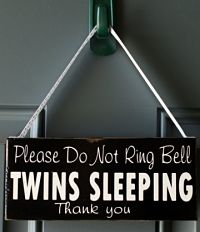 The Bottom Line on Sleep Training Twins
The Bottom Line on Sleep Training Twins
Sleep training with twins isn’t twice as hard as a single baby – like most other things, it’s about three times as hard. There’s two of them but only one (or two) of you. They aren’t likely to encourage one another to go to sleep, but they might easily wake one another up. I’ll leave you with one parting note, something that might encourage you.
Once our boys started sleeping through the night (because we did all of the things above), a curious thing happened. When we are getting the twins ready for bed, if we happen to put one in his crib before the other’s quite ready — especially if he’s out of the room, like in the bathtub — he won’t settle down until his brother comes in. Both of them going to sleep at the same time is part of the routine now, and they sort of need each other to do it.
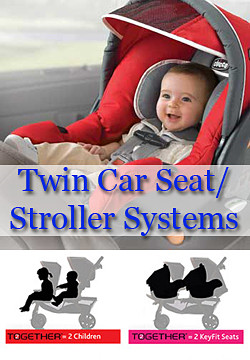 Choosing car seats for twins can be tough. There are so many choices out there! That’s why I like the idea of car seats that both fit into a double stroller, also called a travel system. Most of the time, the stroller accommodates infant car seats when your twins are younger, but also has normal seats where the babies can sit when they’re older and too heavy to lug around in their car seats.
Choosing car seats for twins can be tough. There are so many choices out there! That’s why I like the idea of car seats that both fit into a double stroller, also called a travel system. Most of the time, the stroller accommodates infant car seats when your twins are younger, but also has normal seats where the babies can sit when they’re older and too heavy to lug around in their car seats.